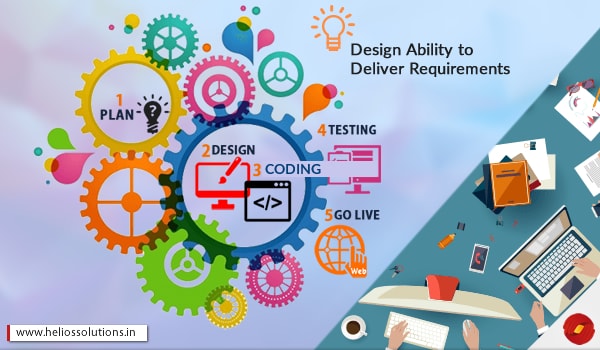The requirements of design keep changing as the visual culture keeps changing. It is important to note that requirements allow people to recreate experiences that will further analyze the areas of meeting requirements
The ability of a system design to meet operational, functional and system requirements is necessary to accomplishing a system’s ultimate goal satisfying mission objectives. One way of assessing the design’s ability to meet the system requirements is through “requirements traceability” This is the process of creating and understanding the bi-directional linkage between requirements, organization goals and solutions (performance).
Drawing Requirements Process
When you are working on a web development project, the main task is assessment of design ability to meet the system requirements with validation. There is a need to trace the requirements so that the solution delivered to the end client is fulfilling the functional requirements.
Requirement document and then verification is simply the foundation for the change process that may take place in the later stage of the web development project. Without tracing the requirements from top to bottom, the effect of changes will not be as far reaching. This could also affect the overall performance. There has to be a well thought bi-directional flow that accounts the requirements baseline through the development project.
See Also : An Approach To The Process Of Software Development
Preparing Requirement Flow
There is a difference in approach with the kind of experience and team. Everyone adopts different ways of drawing requirements. Once you are done tracing the requirements of the solution, then all you need is a plan. Planning the functionalities is good for honoring the capabilities of the system. This can be offered by a system that needs to be tracked through various stages of requirements which can be operational, functional for development and evolution. It must be planned in order to support the higher level organizational goals and initiatives.
As a part of the drawing process, the requirement flow can be approached in two ways:
- Towards Higher Organization Goals
- Towards Design to Enable Desired Capability
Step by Step Verification Process
This one step cannot be avoided for any ability to test and verify the key element of the project. The requirements are tied to the operational needs that should be generated from the outset and maintained throughout the requirement life cycle.
Our team of Software development experts, Quality and Testing Engineers have the ability to test and verify elements of the project and program success, requirements tied to operational needs. It is important that this meets the prototype which will eventually help in assessing requirements with valuable tools for verification and validation. The testing and verification plan must be in line with the original requirement document so that the desired capability can be evaluated based on the document before the fielding decision.
A Requirement Flow with Clarity
An Approach is Important
Irrespective of the kind of project, it is important that you ensure that there is an approach that accounts the above process, so that you assess your design before your proceed with the development process. This needs to be done in order to have a structure for the development cycle while staying organized. It is important to ensure that testing and verification is done at every step. So that at the end your solution has the desired capability without losing the essence of the design.
Hire web application development specialist with Helios Solutions as we adopt an approach that offer robust and high end solutions that will further evaluate the needs at the every step of development. We hope this was an interesting read and help you empower your IT workforce.
Helios Software Engineers Role
The Helios Software Engineers understand the importance of creating a system based on a design that meets the software development solutions. Our software engineers review and influence the contractor’s abilities in order to build a solution architecture that enables the software solutions for the long term plans. Our engineers also look into the support and maintenance requirements post the development of the software solutions.





